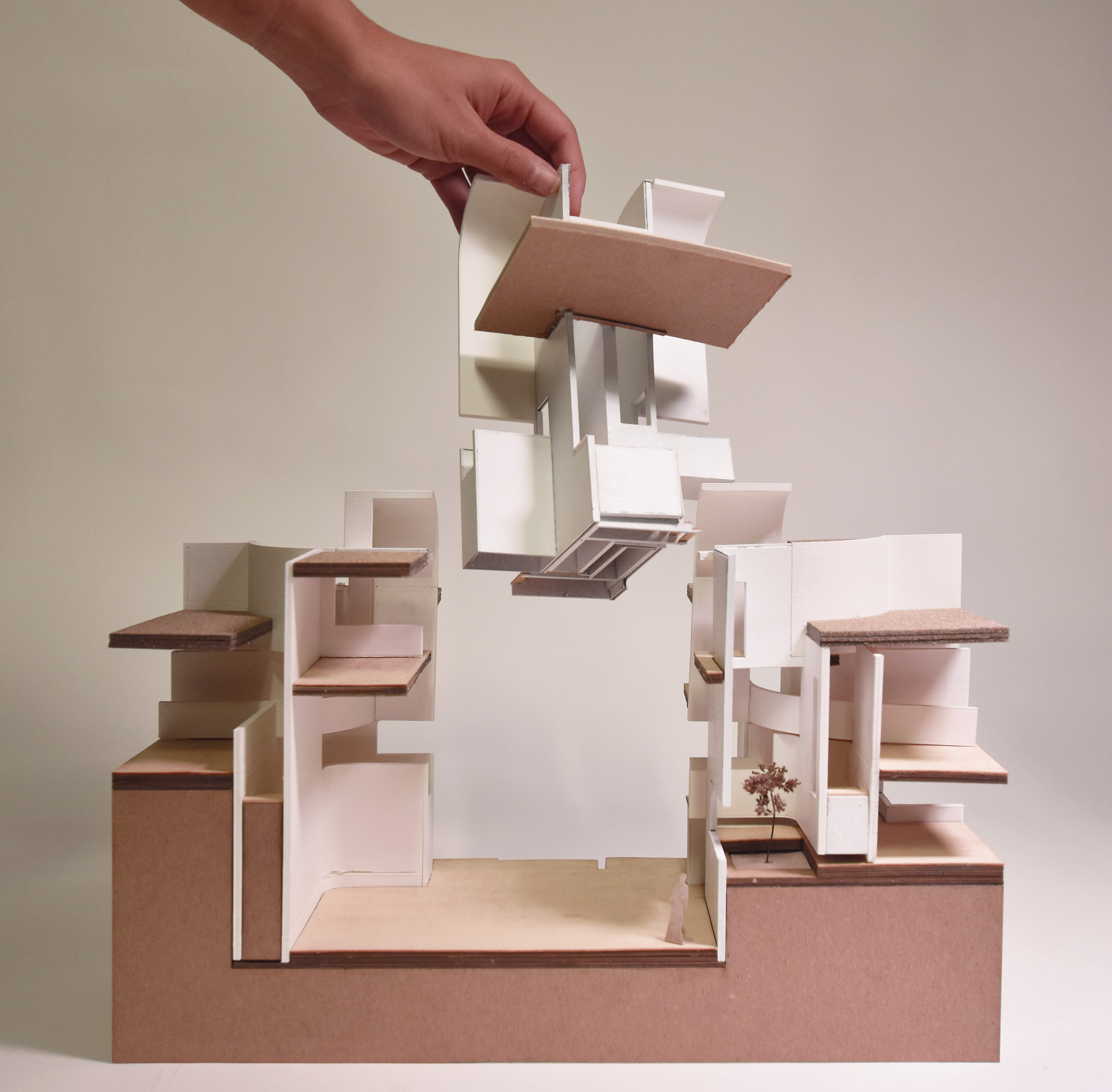Restorative Justice Center / Fall 2018
Critic: Laura Briggs
Critic: Laura Briggs
A ⋅ NODE ⋅ TO ⋅ CHANGE
An Introduction to Restorative Justice
Restorative Justice is an alternative to the current adversarial criminal justice system. It brings together those who have harmed, their victims, and affected community members into a voluntary processes through face-to-face dialogue based on existing conferencing models and circle processes. The goal is to meet needs victims themselves identify while also supporting the positive development of those who’ve harmed. Restorative justice asks us to recognize the importance of relationships—how relationships are built, mended, and maintained —and to rebuild relationships in ways that help individuals and communities to heal. The relationship with oneself is just as important.
Conceptual Framework
Restorative Justice promotes and celebrates our ability, as self-aware and reflective people, to change. To change, however, is no easy task and requires a heavy dose of willpower. How can architecture capture the moment we decide to make a conscious decision to change? What spatial qualities mediate these two states: before and after a decision is made?
‘A Node to Change’ is a restorative justice center that celebrates those transitional spaces through its architecture. I arrived at a “ spatial node” which was derived from these two paths of study:
‘A Node to Change’ is a restorative justice center that celebrates those transitional spaces through its architecture. I arrived at a “ spatial node” which was derived from these two paths of study:



(one) exploring the relationship between circles, an important shape, formally and ideologically, to our project’s program
(two) translating how our site currently mediates green space at three different urban scales (maple to building, hedge to street, park to city) to the scale of human


Program cluster types
The below set of drawings explore program adjacencies across these nodes, allowing for related program to be connected without sharing a parti wall. Additionally, these collages identify the spatial resultants of these nodes. See captions for program cluster types.
 ‘Access’ in green and ‘Open’ in blue
‘Access’ in green and ‘Open’ in blue  ‘Restorative Justice Process I’ in blue
‘Restorative Justice Process I’ in blue  ‘Restorative Justice Process II’ in red
‘Restorative Justice Process II’ in red



The node weaves together multiple circulation ramps and stairs, emphasizing the transient quality of the node. The elevation difference between connected spaces celebrates moving from one state to the next. Towards healing and towards reparation. Hopefully. At least the first step is made.













 Restorative Justice Room with daylight bouncing off wall from the above skylight
Restorative Justice Room with daylight bouncing off wall from the above skylight Threshold between office and outdoor terraced garden
Threshold between office and outdoor terraced garden


How do we capture that moment we decide
to make a conscious change?
What mediates those two states of being or, in other words, motivates this transition?
...and how do we celebrate that moment through
space? •
to make a conscious change?
What mediates those two states of being or, in other words, motivates this transition?
...and how do we celebrate that moment through
space? •

